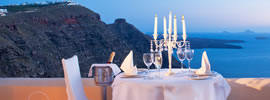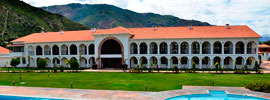- Bolivia Escape Tour/ 6 days
- La Paz - Uyuni Salt Lakes/ 8 days
- Essential Bolivia/ 8 days
- Bolivian Amazon/ 11 days
- Historical Bolivia/ 12 days
- 2024 Luxury Carnival Brazil and Bolivia / 14 days
- Chile, Bolivia and Peru Tour / 14 days
- Private Jet Travel
- Ultra Luxury Tours Worldwide
- View Worldwide Luxury Travel
(Europe, Asia & Middle East, Africa, the Americas and more)
- Bolivia - Apolobamba Trek (6 days / 5 nights)
- Choro Inca trail (4 days / 3 nights)
- Illimani Trek and Optional Ascent / 6 days
- Bolivia - Parinacota Ascent (3 days / 2 nights)
- Bolivia - Sajama Ascent (4 days / 3 nights)
- Tours Sorata Laguna Glacier / 4 days
- Chile / Bolivia volcan Licancabur ascent / 8 days
- Antarctica tours, travel & vacations
- Argentina tours, travel & vacations
- Bolivia tours, travel & vacations
- Bora Bora tours, travel & vacations
- Brazil tours, travel & vacations
- Caribbean tours, travel & vacations
- Chile tours, travel & vacations
- Colombia tours, travel & vacations
- Costa Rica tours, travel & vacations
- Ecuador tours, travel & vacations
- Galapagos tours & cruises
- Guyana tours, travel & vacations
- Honduras tours, travel & vacations
- Mexico tours, travel & vacations
- Panama tours, travel & vacations
- Peru tours, travel & vacations
- Surinam tours, travel & vacations
- Tahiti tours, travel & vacations
- Venezuela tours, travel & vacations
Luxury Travel Latin America

Click here to see our unique selection of luxury vacations throughout Latin America
- Luxury Travel Argentina
- Luxury Travel Antarctica
- Luxury Travel Bolivia
- Luxury Travel Brazil
- Luxury Travel Caribbean
- Luxury Travel Chile
- Luxury Travel Costa Rica
- Luxury Travel Ecuador
- Luxury Travel Galapagos
- Luxury Travel Guyana
- Luxury Travel Honduras
- Luxury Travel Iguassu Falls
- Ultra Luxury-Luxury Retreat Collection
- Luxury Travel Machu Picchu
- Luxury Travel Mexico
- Luxury Travel Panama
- Luxury Travel Patagonia
- Luxury Travel Peru
- Luxury Travel Peru & Brazil
- Luxury Travel Peru & Costa Rica
- Luxury Travel Peru & ecuador
- Luxury Travel Peru & Mexico

- Private Jet Antarctica Charter
- Private Jet Argentina Charters
- Private Jet Bolivia Charter
- Private Jet Bora Bora Charter
- Private Jet Brazil Charters
- Private Jet Caribbean Charter
- Private Jet Costa Rica Charters
- Private Jet Chile Charters
- Private Jet Ecuador Charters
- Private Jet Galapagos Charters
- Private Jet Guyana Charters
- Private Jet Honduras Charter
- Private Jet Mexico Charter
- Private Jet Panama Charter
- Private Jet Peru Charters
- Private Jet Surinam Charter
- Private Jet Tahiti Charter



- Home
- Bolivia Factsheet
Bolivia is not only the most indigenous country in the whole of South America but at the same time it is the poorest. A land-locked, incredibly varied destination with harsh deserts, desolate altiplano, subtropical lowlands and virgin rainforest jungle, the visitor will bear witness to a variety of astonishing landscapes along with communities whose lifestyle has changed little since the time of the Spanish conquest.
With the highest capital city in the world, La Paz, Bolvia also boasts the highest navigable lake in the world with Lake Titicaca. Lake Titicaca is home to tranquil islands steeped in mythology and abundant birdlife. Bolivia’s salt lakes are probably the most incredible site in the whole country and with wellpreserved
colonial cities and grandiose architecture; Bolivia’s cities are also fabulous places to explore.
Potosí, an old mining town rivaled London and Paris as one of the richest cities in the western world nearly four hundred years ago.
Electricity: 220V, 50Hz (La Paz has 110V, & 220V, 50Hz)
Time Zone: GMT/UTC -4
Dialling Code: 591
Climate
The rainy season falls between November and March with an average per month rainfall of 50mm.
Festive Calendar
January 6th - Dia de los Reyes – A festival commemorating the day the three wise kings visited the baby Jesus. Some of the best celebrations for this festival take place in Sucre, Potosi and Oruro
January 24th - Alasitas - The Festival of Abundance - (La Paz) This festival dates back to Inca times and is dedicated to Ekeko, the little household god of abundance. Small stalls selling miniature collections of seeds for good harvest, dollar bills for wealth, airline tickets for travel and all sorts of other miniatures to signify what you hope to obtain in the new year are everywhere.
First week of February - La Virgen de Candelaria - A week-long festival especially celebrated in Copacabana, near Lake Titicaca
2nd Sunday in March - Phujllay (meaning ‘play’ in Quechua celebrates the battle of Lumbati and is
Bolivia’s largest festival
March-April - Semana Santa - Holy week
May 3rd - Fiesta de la Cruz
May 27th - Dia de la Madre - Honours the women and children who defended their homes and cities in
the battle of 1812
June 24th - San Juan Batista - A nationwide celebration although most colourful in Santa Cruz
Ausgust 6th - Independence Day
Last week of August - Chutillos (Potosi) – A festival that celebrates the traditions of dance and music. It has achieved international acclaim in the past few years.
November 1st and 2nd - All Saints Day and All Souls Day Currency
The Boliviano is divided into 100 centavos. You can change excess Bolivianos at the Peruvian border at a good rate. The US dollar is again the most widely accepted form of currency and many purchases will be cheaper in cash. Banks and Casas de Cambio operate from 9am to 6pm but are usually closed during lunch. Travellers’ cheques and credit cards are still the safest form of currency, but you may have difficulty using them in some of the smaller villages. There is little or no commission charged for using travellers’ cheques and credit cards. Always ask for small denominations.
Visas
Most nationalities do not require a visa for stays less than 30 days, but please consult your embassy for current requirements. Notable exceptions include Irish nationals and nationals of Singapore.
Health
Vaccinations
Recommended although not compulsory are typhoid, tetanus, altitude sickness, rabies, Chagas' disease, malaria, yellow fever, hepatitis, cholera, dengue fever.
Best time to go
So close to the equator yet the altitude in most parts of Bolivia makes it a much cooler country than one might think. Evenings can be quite cold, so a warm fleece is a good idea. Daylight hours are often warm, and shorts may be the most comfortable wear. Exceptions to this are Puerto Suarez, which is very humid, and Uyuni, where cold winds blow in from Patagonia. It is best to pack for all types of weather. While the highlands and altiplano can be cold in the winter and wet in the summer, the only serious barrier to travel will be the odd road washout. In the tropical lowlands, however, summer can be miserable with mud, steamy heat, bugs and relentless downpours. Travel is difficult, and services may be stifled by mud and flooding.
Also consider that the high tourist season falls in the winter (late June to early September), due not only to climatic factors, but also to the timing of European and North American summer holidays and the fact that it's also Bolivia's major fiesta season. This means that both overseas visitors and lots of South Americans are travelling during this period.
Upon arrival
You may arrive at either the airport, where you will be welcomed and taken to your hotel by private airconditioned
minivan/bus. If you are arriving by bus, you will again be welcomed and transported to your hotel. Take things easy for the first few days in La Paz, because the altitude will have you feeling breathless in no time. La Paz is a very easy city to orientate oneself in. There is only one major road that runs through the heart of the city with all other streets somehow connecting to it.
Food and drink
Drink only bottled water. Pasteurised milk is widely available. Avoid dairy products that are likely to have been made from unboiled milk. Avoid street food vendors and the cheaper restaurants.
What to eat
To try some typical foods, here is a selection of what we recommend.
Salteñas - meat, chicken or vegetable ball shaped pastries.
Marraqueta – A La Paz bread with a crusty exterior and a soft centre.
Llaucha pacena - A cheese bread
Empanadas – Meat/cheese pastries
Humitas - maize pie
Pukacapas - Spicy cheese pie
Silpancho - Fried breaded meat with eggs, rice and bananas
Panankalla – A very sweet corn / caramel mixture
Papas rellenas - Stuffed potatoes
Trout from Lake Titicaca is a specialty in Copacabana.
Tojori - An oatmeal-mixture of mashed corn, sugar and cinnamon
Tawa-tawas – A donut made in Potosi
Breick chocolate
What to drink
Chicha - A fermented maize drink. Some versions are alcoholic.
Api – A drink made with cloves, cinnamon, lemon and sugar
El Inca - The local dark, sweet beer
Mate de coca - Coca leaf tea
Highlights
La Paz
Museums - Calle Jaen - A beautifully restored colonial street where you can visit the Museo de Metales Preciosos Pre-Colombianos, the Museo del Litoral, the Museo Casa Murillo and the Museo Costumbrista Juan de Vargas – All of these can all be visited in one day
Museo de Etnografia y Folklore - Located at the corner of Ingavi and Calle Genearo Sanjines offers exhibits of the costumes and artistry of many Bolivian ethnic groups Museo de Arqueologico de Tiwanaku - is a good place for history and archeology. Closed on Sundays
The Witch Market - Found on Calle Linares between Sagarnaga and Santa Cruz. You can buy charms, herbs and potions.
Mercado Negro - (Black Market) - Located at Calle Graneros and Eloy Salmon, this is a good place to buy imitation goods. CDs, tapes, electronic goods, imitation designer clothing are all for sale at ridiculously cheap prices.
Mercado La Ceja (Thursdays and Sundays) - found at Plaza 16 de Julio, this market stretches across the main thoroughfare and is a great place to get out and meet the local people.
Around La Paz
Valle de la Luna - (Valley of the Moon) - About 10km away, it’s not actually a valley but a myriad of fossilized cacti that give a futuristic landscape. Wear shoes with a good grip as there are some steep rocks
to climb.
Muela del Diablo - Is an extinct volcanic plug. You can hike to its base on trails that offer spectacular views of La Paz.
Valle de Las Animas - (valley of the spirits) offers much the same eerie landscape as the Valle de la Luna, but on a grander scale. There are a couple of good hiking routes you can take.
Bolivian Amazon Although not as accessible or developed for tourism as Peru, Bolivia nevertheless boasts some spectacular rainforest areas such as the Madidi Reserve. The close by Pampas is also an astonishingly wildlife rich natural area. There are many tracts of Amazon still very much unexplored allowing for Bolivia to be able to offer a true wilderness experience.
Sorata
Located only a small distance from La Paz, Sorata is the trekking capital of Bolivia. With irs own interlinking Inca trails and mountains to climb, the whole chain of the Cordillera Real is a mecca for adventure seekers.
Uyuni
The highest salt lakes in the world are without doubt the countries most spectacular single destination. The sea of salt, littered with astonishing natural wonders like islands of giant cacti, lakes of red algae home to flamingos and sulphurous geysers allow for a surreal trip to another world.
Bolivian Pantanal
A generally unknown part of Bolivia with its very own wetlands. Smaller than Brazil’s more famous Pantanal region, the wildlife here will nevertheless astound all intrepid visitors.
Hotels
All the hotels we recommend are clean, well located and comfortable hotels varying in services as according to their category. We rarely use hostels as the price difference is negligible between a good hostel and a hotel. In places like Ururo and Uyuni, we do work with some very good hostels. It is important to remember that Bolivia is a third world country and three star hotels here will not necessarily be the same as three star hotels in Europe or the US. We do endeavour to choose the best hotels in line with your budget. There are five hotels we offer down to three star comfortable lodges. We will always quote you with good hotels on all our programmes but upgrades or downgrades will be available as per your request. However, as the price will decrease with downgrades, this will ultimately reflect in the services and standards of the hotel.
Flights
Unless otherwise stated, we provide all internal flights in your programme, excluding the airport taxes. We also provide international flights around South America and can quote, upon request, your international flight to Bolivia. We work directly with the best airlines in South America but are not responsible for any changes in flight schedules or cancellations made by the airlines. This is the responsibility of the airline in question. We will always endeavour to minimise any delays or changes but cannot guarantee a successful outcome.
Insurance
It is a mandatory requirement that all our customers take out adequate travel insurance cover. Once you have obtained your insurance, it is company practice to check the validity and cover of your insurance policy and we hold the right to refuse travel to anyone whose insurance does not satisfy Amazing Peru's stringent criteria. These include cancellation and curtailment, death or injury, medical insurance, emergency repatriation, delayed baggage, loss and theft etc.








